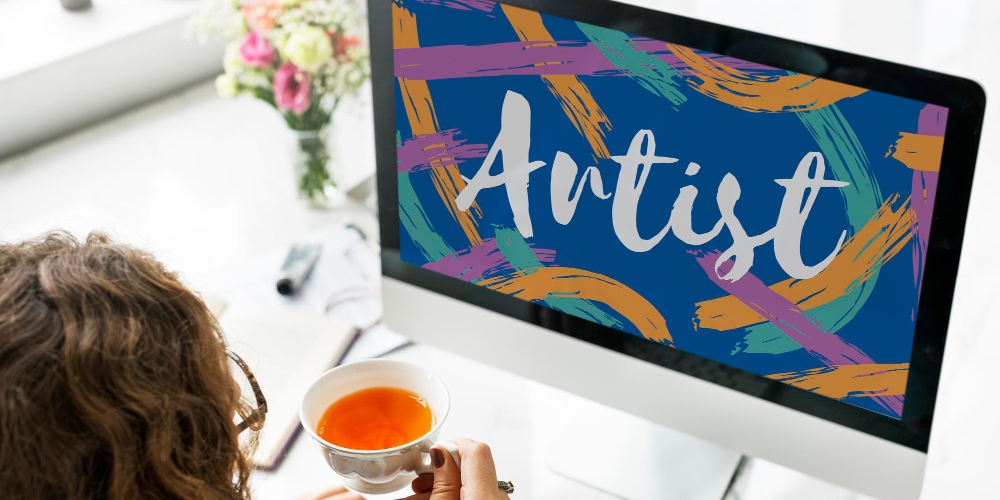
Brushing Up on Creativity: Inspiring Web Design for Artists
In the ever-evolving digital landscape, an artist’s website serves as both a canvas and a portfolio, translating the essence of their creativity into the language of the internet. Crafting a masterpiece online involves more than just displaying artworks; it’s about creating an immersive experience that resonates with the artist’s unique style. In this guide, we delve into the inspiring world of web design for artists, exploring tips on visual elements, color schemes, and layout choices that elevate artistic expression.
Visual Elements: Brushstrokes in Cyberspace
1. Capture the Essence with Visual Storytelling
The homepage of your artist’s website is the grand entrance to your creative universe. Use compelling visuals that tell a story about your art. Consider a slideshow of your key works, each image transitioning like the turning pages of a visual narrative.
2. Create a Striking Logo or Signature
Infuse your brand into the design with a unique logo or signature. This small yet impactful element can serve as a visual anchor, reinforcing your artistic identity throughout the website. It’s the digital equivalent of signing your masterpiece.
3. Interactive Galleries for Dynamic Displays
Move beyond static image displays. Integrate interactive galleries that allow visitors to zoom in on details or view artworks from different angles. This dynamic approach not only engages the audience but also provides a more intimate experience with your creations.
4. Typography as an Art Form
Treat typography as an extension of your artistic expression. Experiment with fonts that complement your style. Whether it’s a bold and modern look or a classic and elegant feel, the right typography enhances the overall aesthetic of your website.
5. Consistency Across Pages for Visual Harmony
Maintain consistency in visual elements across your website. From color schemes to image styles, creating a harmonious visual language ensures that your website feels like a unified art piece rather than a collection of disconnected pages.

Color Schemes: Painting Emotions in Pixels
1. Understand the Psychology of Colors
Colors evoke emotions, and as an artist, you understand this language well. Choose a color scheme that aligns with the mood and tone of your artwork. Soft pastels for a serene ambiance, bold and vibrant hues for energetic vibes – let your palette speak volumes.
2. Contrast for Emphasis
Leverage contrast to emphasize key elements. If your artwork is intricate, consider a clean, minimalistic background to make it pop. Conversely, bold backgrounds can amplify the impact of simpler pieces. Striking the right balance ensures that each piece gets the attention it deserves.
3. Highlight Your Signature Colors
If you have signature colors that define your artistic style, make them prominent throughout your website. Whether it’s the background, buttons, or accents, incorporating your signature colors reinforces your brand and creates a cohesive visual experience.
4. White Space: A Breath of Fresh Air
Don’t underestimate the power of white space. It provides visual breathing room, allowing your artwork to shine without distraction. Embrace a clean layout that balances images with white space, offering visitors a visually soothing browsing experience.
5. Adaptability for Diverse Artwork
Consider the adaptability of your color scheme to accommodate the diversity in your artwork. A flexible color palette ensures that your website remains visually appealing regardless of the variety in your creations.
Layout Choices: The Composition of Your Digital Canvas
1. Grid Layouts for Order and Symmetry
If your artworks vary in size and shape, a grid layout can bring order and symmetry to your website. This structured approach ensures a visually pleasing arrangement, allowing visitors to navigate through your portfolio with ease.
2. Full-Screen Immersion for Impact
For artworks that demand undivided attention, consider a full-screen layout. This immersive design choice allows visitors to delve deep into the details of each piece, creating a captivating and memorable experience.
3. Asymmetry for Artistic Dynamism
Break away from conventional layouts and embrace asymmetry for a dynamic feel. This approach is particularly effective for artists with a contemporary or avant-garde style, adding an element of surprise and unpredictability.
4. Storytelling Through Scroll: Vertical Narratives
Use the scrolling feature to your advantage, creating a vertical narrative that unfolds as visitors scroll down. This storytelling technique is engaging and encourages exploration, allowing you to guide visitors through the evolution of your artistic journey.
5. Responsive Design for Universal Appeal
Ensure that your chosen layout is responsive across various devices. A layout that adapts seamlessly to different screen sizes guarantees that your artistic vision is accessible to a broad audience, from desktop users to those on mobile devices.

Your Digital Masterpiece Unveiled
In the vast canvas of the internet, your artist’s website is a digital masterpiece waiting to be unveiled. By infusing your unique style into the design, experimenting with colors that speak your artistic language, and making thoughtful layout choices, you create a virtual gallery that not only showcases your artworks but also immerses visitors in the essence of your creativity.
Remember, your website is an extension of your artistry, a bridge between the tangible and the digital. As you embark on the journey of web design for artists, let your creativity be the guiding force. Brush up on the elements that make your artistic voice distinctive, and watch as your website becomes a masterpiece in its own right—a testament to your boundless creativity in the ever-expanding realm of the online art world.